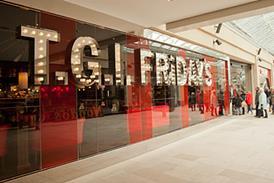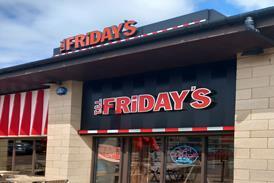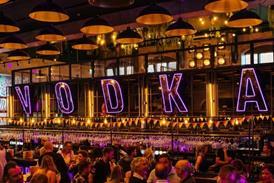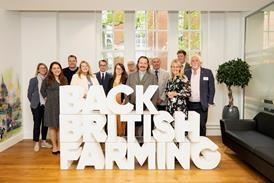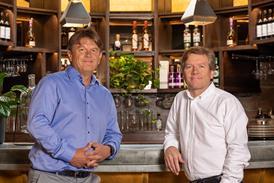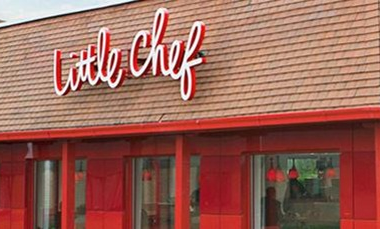Mike Shipley, analytics and insight solutions director at Fourth, looks at the early signs of how the hospitality sector is getting to grips with the implementation of the national living wage and suggests the narrative of our national press and politicians shows there is little understanding of, or sympathy for, the economics of running bars and restaurants
It is little more than a month since the new national living wage rules kicked in and, in the wake of this significant upward shift in employment costs, operators have been visibly wrestling with the labour line of their P&L. What is clear is that, for some companies, something had to give, and their battle for margin has spilled into the public consciousness, with national newspapers reporting several chains to their readers for upwardly revising menu pricing and, in other cases, adjusting or binning some staff perks, in an effort to claw back savings. While some groups have resolutely held firm on all staff benefits – tackling rising labour costs purely via productivity – several national chains were named for ending paid-for lunch breaks. Others have scrapped free food. George Osborne rather helpfully decreed that such action was not ‘in the spirit’ of the new living wage regime.
The reality is that many operators have had to tweak menu pricing (as MCA Menu & Food Trends analysis shows) and re-evaluate the ‘value proposition’ for their staff, at what is the start of an era of rising labour costs. Further living wage costs are pegged through to 2019. This significant labour cost inflation comes at the same time as the Government’s workplace pension initiative kicks in for all businesses (this year and next), adding a further layer of incremental employment cost.
The context of rising labour costs
First, a little context on the trading environment in which these cost pressures are arriving. On the demand side, the market appears to be reasonably buoyant. Recent figures from Barclaycard suggest that consumer spending in the hospitality and entertainment sector is up 3.3% on 2014 – the highest growth for four years – on the back of low inflation, a more secure jobs market and, of course, wage growth. Barclaycard said that spend on entertainment as a whole had seen record growth of 11.4%.
According to MCA’s Eating Out Panel, spend on breakfast and lunch hit a 12-month high. While participation levels were flat year-on-year, they rose 0.7% month-on-month. Eating out is a national sport, with 93% of adults in the game.
Translating that into the picture for operators, the Coffer Peach Business Tracker depicts a more competitive state of affairs, with like-for-like sales growth up just 0.6% in March versus the same month in 2015. The rolling annual like-for-like sales figure for a full 12 months is up 1.3%. The 32-company cohort that supply numbers for the tracker reported overall sales growth of 4.9% on the back of openings. This is, of course, the experience of a group of established operators. What is clear is that competition for customers is intense.
Where will pay levels settle?
The new living wage requires hourly paid staff, aged 25 and over, to receive £7.20 per hour, a 50p per hour rise from the national minimum wage previously applicable (and still applied to over-21s) of £6.70. It means that for a large company employing 1,000 over-25s full time, labour costs just rose £1m (plus a further 14% NI).
The new threshold sets a new floor for pay. The big question for operators is what do they actually need to pay? Perhaps at this juncture it is helpful to consider how the previous floors in pay have influenced overall pay in the hospitality sector. Using data from the Fourth Analytics database, which has access to hourly rates for thousands of workers across thousands of hospitality and leisure businesses, we can also see that, on average, the hospitality sector has stayed one step ahead of the minimum wage. This suggests that the perceived gap between pay rates before and after the living wage was nowhere near as big as some in the industry may have thought.
The average hospitality worker over the age of 21 received an hourly wage of £7.04 in October 2015 – just 16p shy of the national living wage. Even if this rate had not increased during the October rise, the average hospitality worker was already earning 34p ahead of minimum wage when the living wage took effect, leaving a relatively small jump to push them ahead of the increase.
These figures are, admittedly, an average, and for a clearer picture of wages in hospitality it is necessary to dig deeper. Before the previous increase in October 2015, which increased the minimum wage from £6.50 to £6.70, the average hotel worker was already being paid £7.58 an hour – putting them far ahead of the living wage. Anecdotally, operators suggest this higher rate of pay in hotels is on account of a wider range of roles – from receptionists and cleaners through to chefs and waiting staff – with a higher proportion working behind the scenes and, therefore, not having the opportunity to receive tips.
In food and drink we see a slightly different story. Staff in casual-dining restaurants were paid an average of £7.15 in September 2015 and quick-serve restaurants were seeing a lower rate of pay, receiving £6.89 per hour. This rate was lower again for pubs and bars, where pay was an average of £6.70 per hour – 20p ahead of the minimum wage (at the time). Again, there are anecdotal theories as to why pay is lower in pubs, such as a younger, more transient workforce, more part-time workers and a more convivial environment. It, nevertheless, should offer food for thought. The more contentious conclusion is pubs and bars may need to compete financially for better people. A recent study by Hospitality-GEM revealed that consumers who eat out believed pubs and bars had the ‘worst trained’ staff.
Ultimately, the findings above suggest that actual pay in hospitality may well move ahead of the new legal pay threshold, especially given the well-documented chef shortage, and as the large supermarket groups take their minimum pay levels past £8 per hour. The battle for the best people is going to intensify, whether they are 18, 21, 25 or 65. This new level also serves as a reference point for other levels and pay grades, and is, therefore, likely to trigger pay increases further up the food chain to GM level.
Getting more productive
What is clear is that we are in a sustained period of labour cost inflation. We believe that a big part of the answer lies in productivity initiatives. Put simply, this requires companies to schedule better, plan labour better, and that means they have to forecast better. Software and algorithms can do the heavy lifting here. We see leading bar and restaurant companies using complex software to more accurately predict sales, and plan accordingly. Done properly, this work drives both top-line revenue and margin. We are aware of one business that has realised a multimillion-pound advantage from this work – growing sales and making savings, and in doing so, shaving a full percentage point from total group labour costs. The new national living wage promises to push increasing numbers of hospitality businesses further down this path.
■ Mike Shipley is analytics and insight solutions director at Fourth, a leading provider of cloud-based cost control solutions


